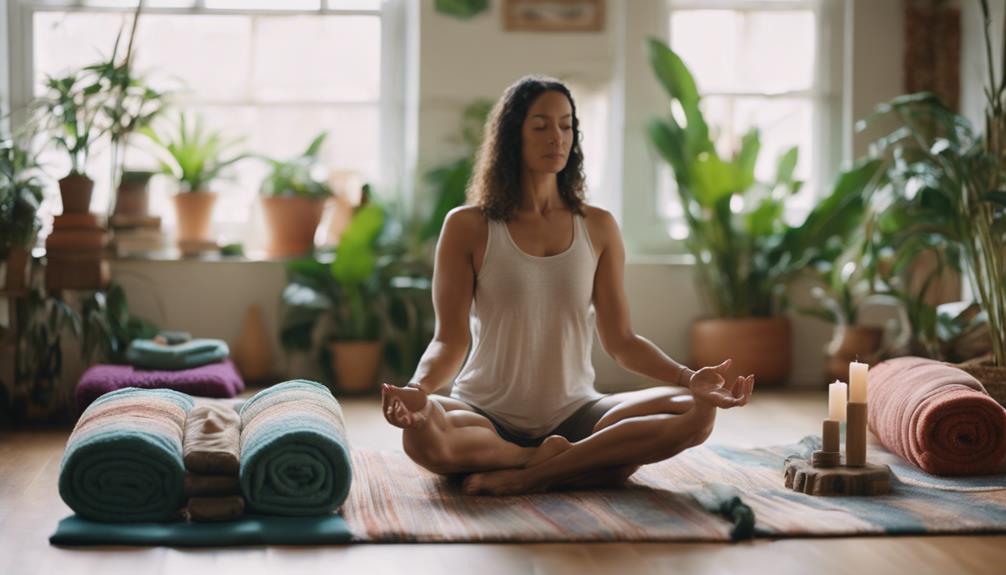How Much Yoga Should You Do A Day

Yoga has gained immense popularity in recent years as a holistic practice that promotes physical well-being, mental clarity, and emotional balance. With various styles and approaches, many people wonder, “How much yoga should you do a day?” In this article, we will explore the benefits of yoga, the recommended duration and frequency of practice, and how to tailor your yoga routine to meet your individual needs.
The Benefits of Daily Yoga Practice
Before delving into how much yoga you should do a day, it’s essential to understand the numerous benefits that come with regular practice. Yoga enhances flexibility, strength, and balance, making it an excellent exercise for individuals of all ages. Beyond physical benefits, yoga also promotes mental health by reducing stress and anxiety, improving focus, and enhancing overall mood. Furthermore, consistent practice can lead to better sleep patterns and increased energy levels throughout the day. Therefore, determining the right daily yoga practice can significantly enhance your quality of life.
How Much Yoga Should You Do as a Beginner?
If you’re new to yoga, starting with a manageable routine is crucial. Beginners should aim for at least 15 to 30 minutes of yoga practice each day. This duration is sufficient to help you establish a connection with your body, learn fundamental poses, and develop a basic understanding of breathing techniques. As you become more comfortable with your practice, you can gradually increase the duration and complexity of your sessions. Remember, consistency is key; even shorter daily practices can yield significant benefits over time.
Understanding Different Yoga Styles and Their Requirements
The frequency and duration of your yoga practice may also depend on the style of yoga you choose. For instance, a gentle Hatha or Yin yoga class may require less time compared to a vigorous Vinyasa or Ashtanga session. Generally, most practitioners find that practicing yoga for 30 minutes to an hour, three to five times a week, strikes a healthy balance. However, if you’re opting for a more intense style, you may want to increase your practice to six or seven days a week. Ultimately, it’s crucial to listen to your body and adjust your routine based on how you feel.
Related Posts:
Daily Yoga Practice: Quality Over Quantity
When considering how much yoga you should do a day, it’s important to emphasize the quality of your practice over sheer duration. Engaging in focused, mindful practice for even 20 minutes can be more beneficial than a rushed hour-long session. Concentrate on your breath, align your body correctly, and immerse yourself in each pose. This mindfulness enhances the physical and mental benefits of yoga. Therefore, instead of fixating on a specific number of minutes, prioritize creating a fulfilling and intentional practice.
Listening to Your Body: Adjusting Your Yoga Routine
One of the most vital aspects of yoga is developing the ability to listen to your body. Your daily energy levels, mood, and physical condition can vary significantly, which may affect how much yoga you should do a day. Some days, you may feel energized and ready for an hour-long session, while other days may call for a gentle 15-minute practice. By tuning into your body’s signals, you can create a personalized routine that aligns with your current state, preventing burnout and injury.
Integrating Yoga into a Busy Lifestyle
In our fast-paced world, finding time for yoga can be challenging. If you have a busy schedule, consider breaking your practice into shorter segments throughout the day. For example, you might do a 10-minute session in the morning, a quick 5-minute break for breathing exercises during lunch, and finish with a 20-minute evening routine. This approach not only makes yoga more manageable but also allows you to reap its benefits throughout the day. Remember, even a few minutes of yoga can refresh your mind and body.
The Importance of Recovery and Rest Days
While daily yoga practice can be beneficial, it’s equally important to incorporate recovery and rest days into your routine. Overdoing it can lead to fatigue and injuries, counteracting the benefits of your practice. Listen to your body and schedule rest days as needed. Active recovery, such as gentle stretching or restorative yoga, can also be beneficial on these days. By allowing your body to recover, you can maintain a sustainable practice that fosters long-term health and wellness.
Conclusion: Finding Your Ideal Yoga Routine
Ultimately, how much yoga should you do a day is a personal decision that depends on your fitness level, lifestyle, and goals. Whether you’re practicing for 15 minutes or an hour, the most important factor is consistency and mindfulness in your practice. Start with a duration that feels comfortable, gradually increasing as you become more experienced. Remember to listen to your body, prioritize quality over quantity, and allow for recovery. By creating a balanced yoga routine tailored to your needs, you can maximize the numerous benefits of this ancient practice and enhance your overall well-being.
By incorporating these considerations into your daily practice, you will find the right balance for your yoga journey. Whether you’re a beginner or an experienced practitioner, the key is to enjoy your practice and allow it to evolve with you over time. Happy practicing!Why Does Yoga Help You Lose Weight